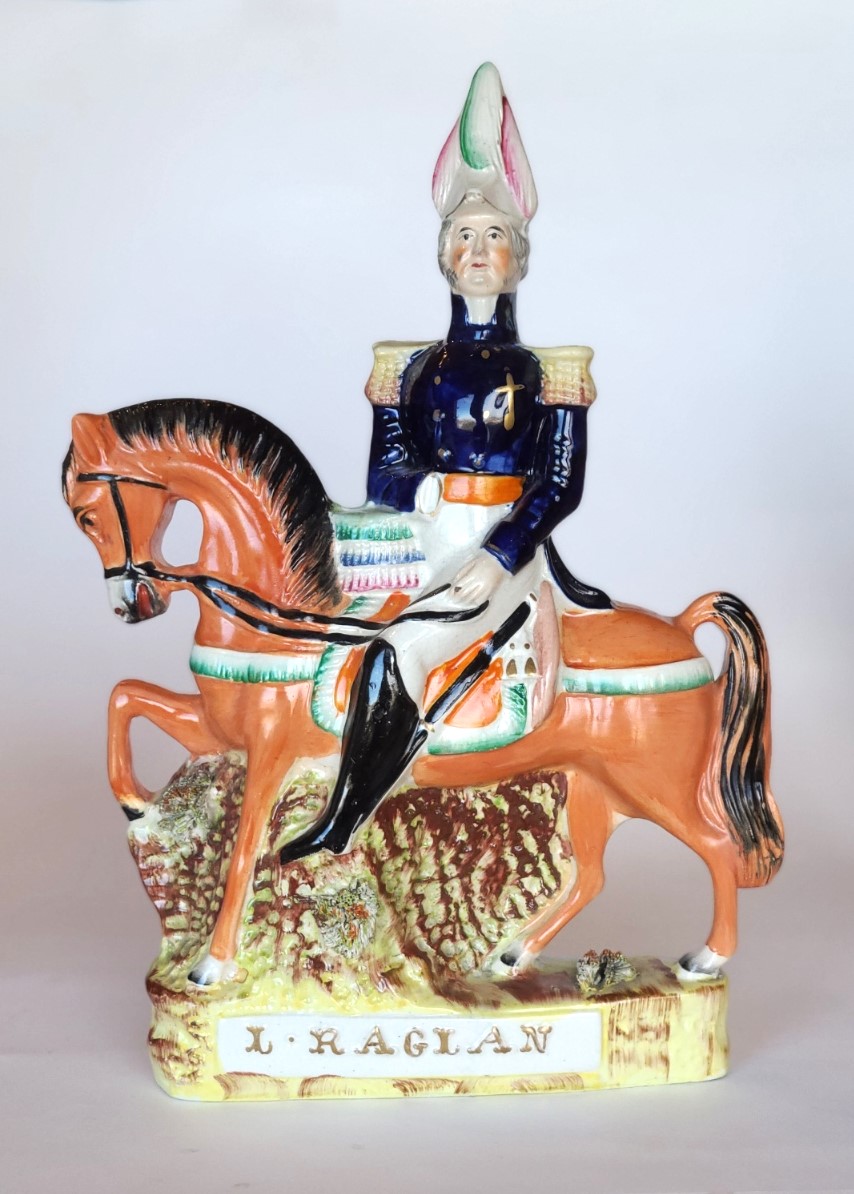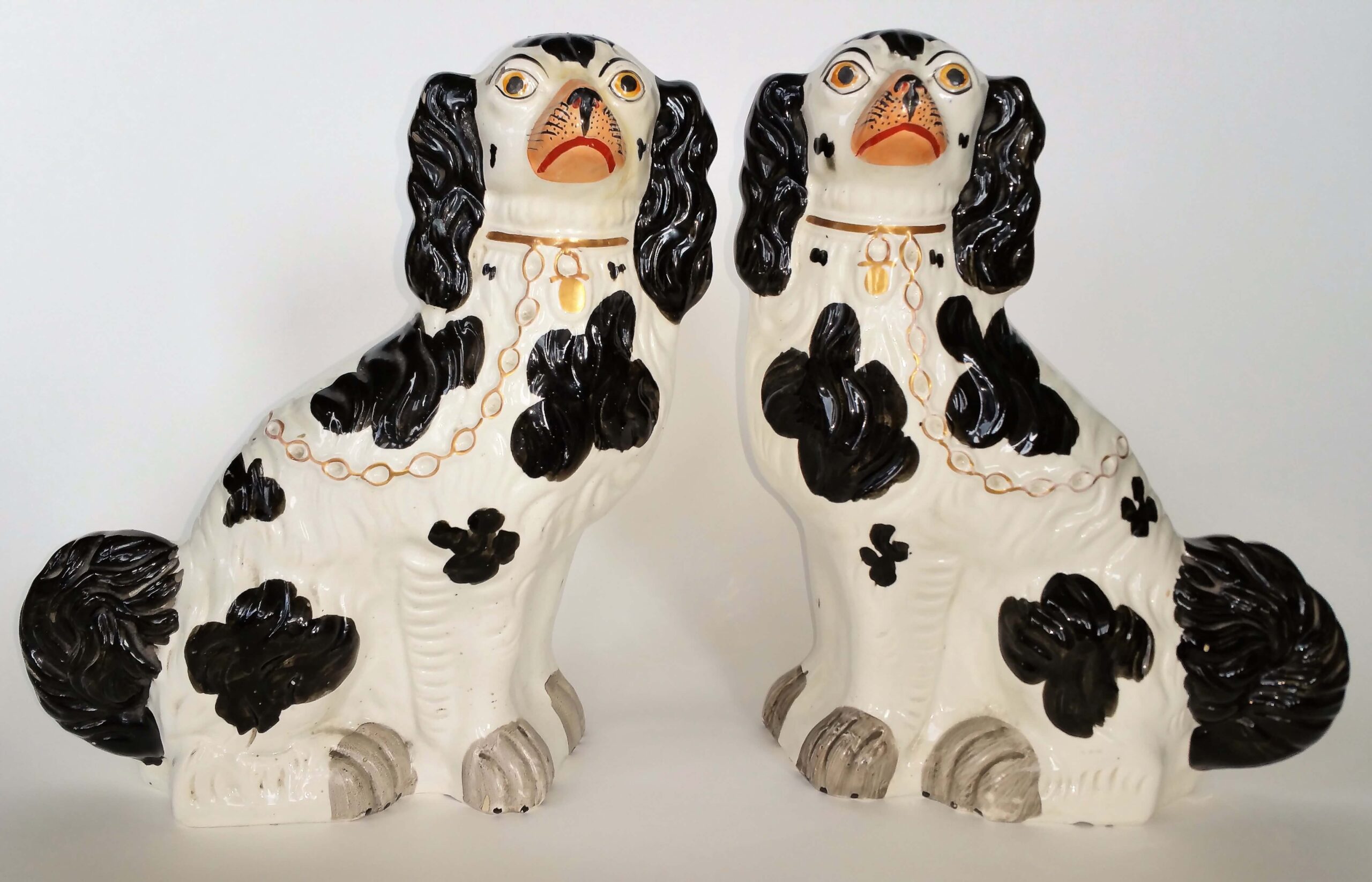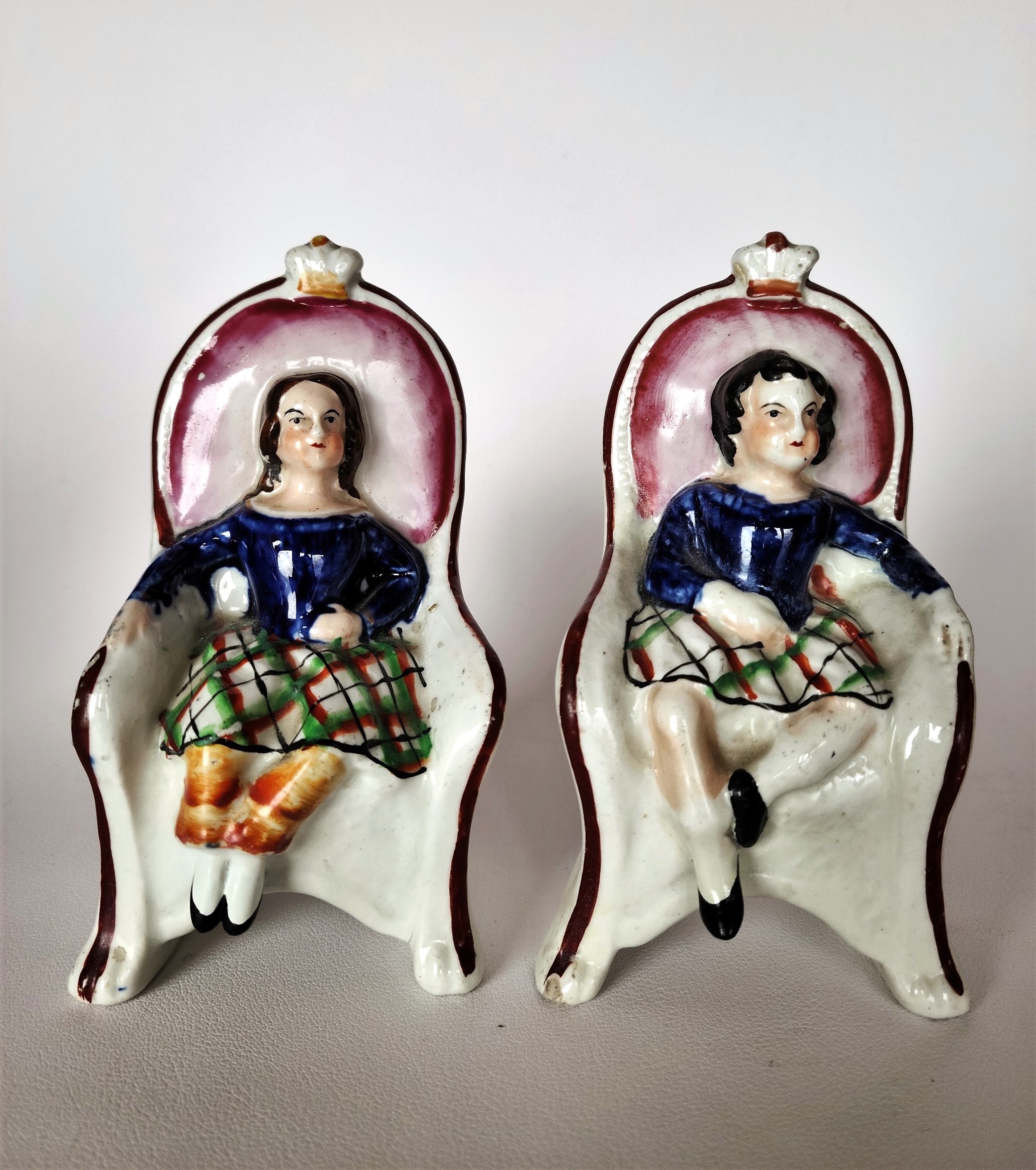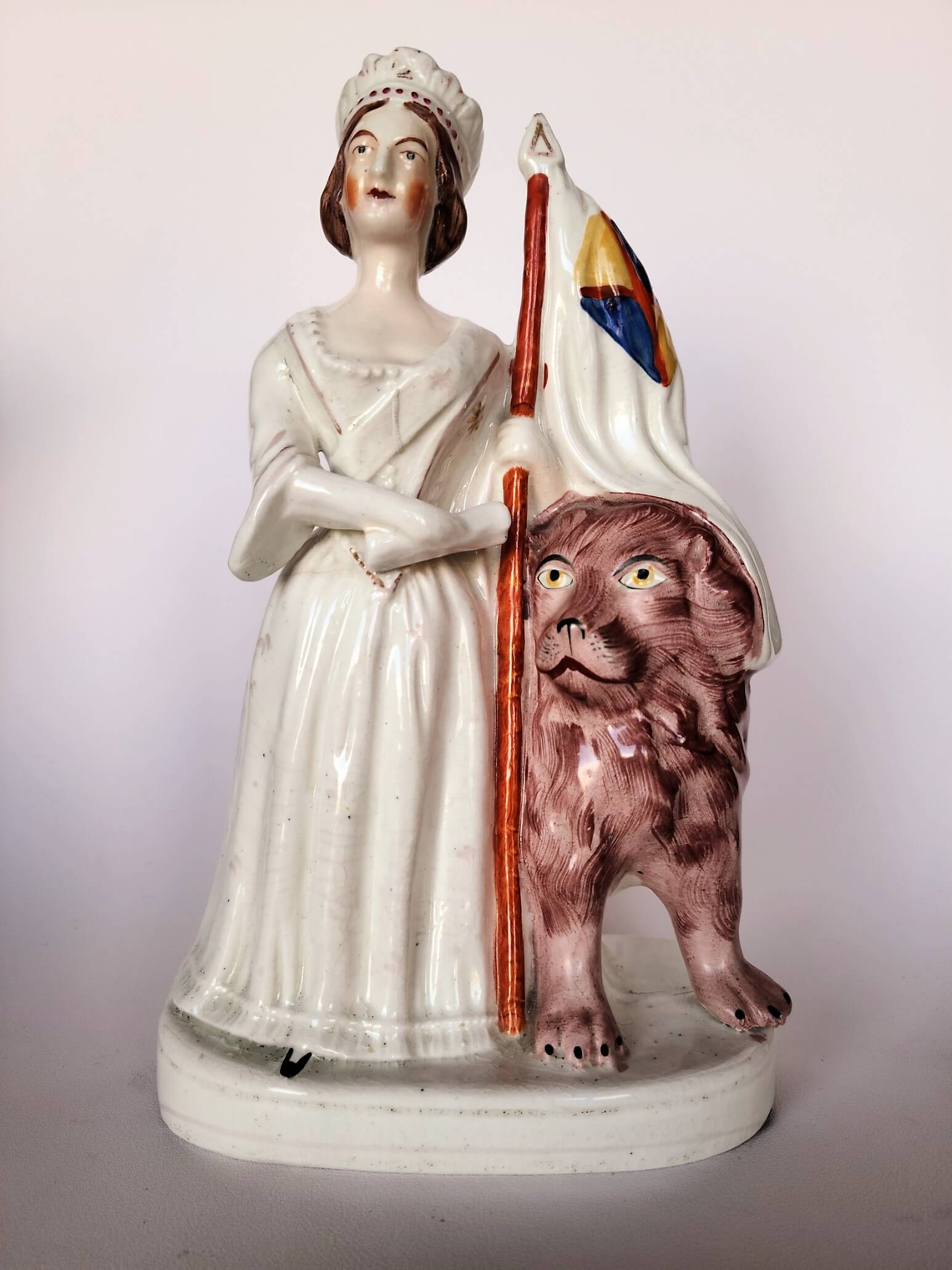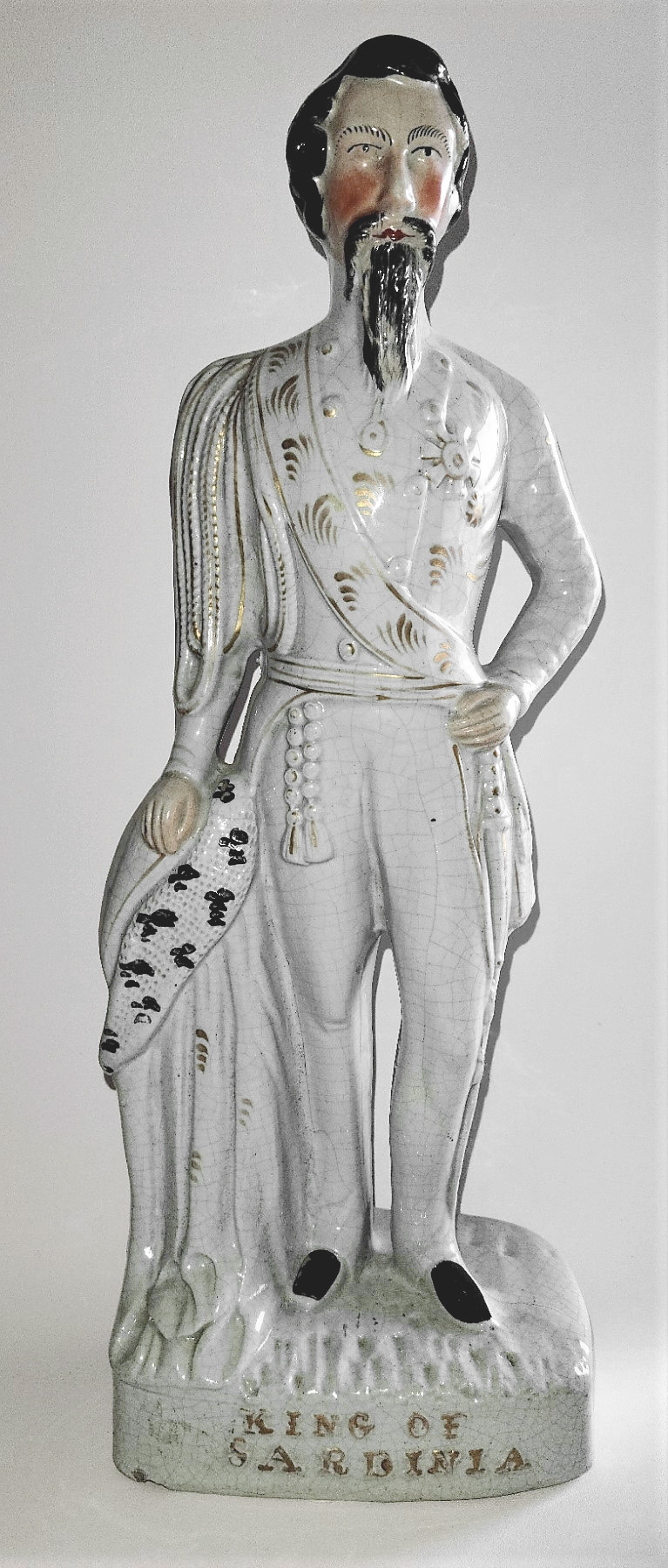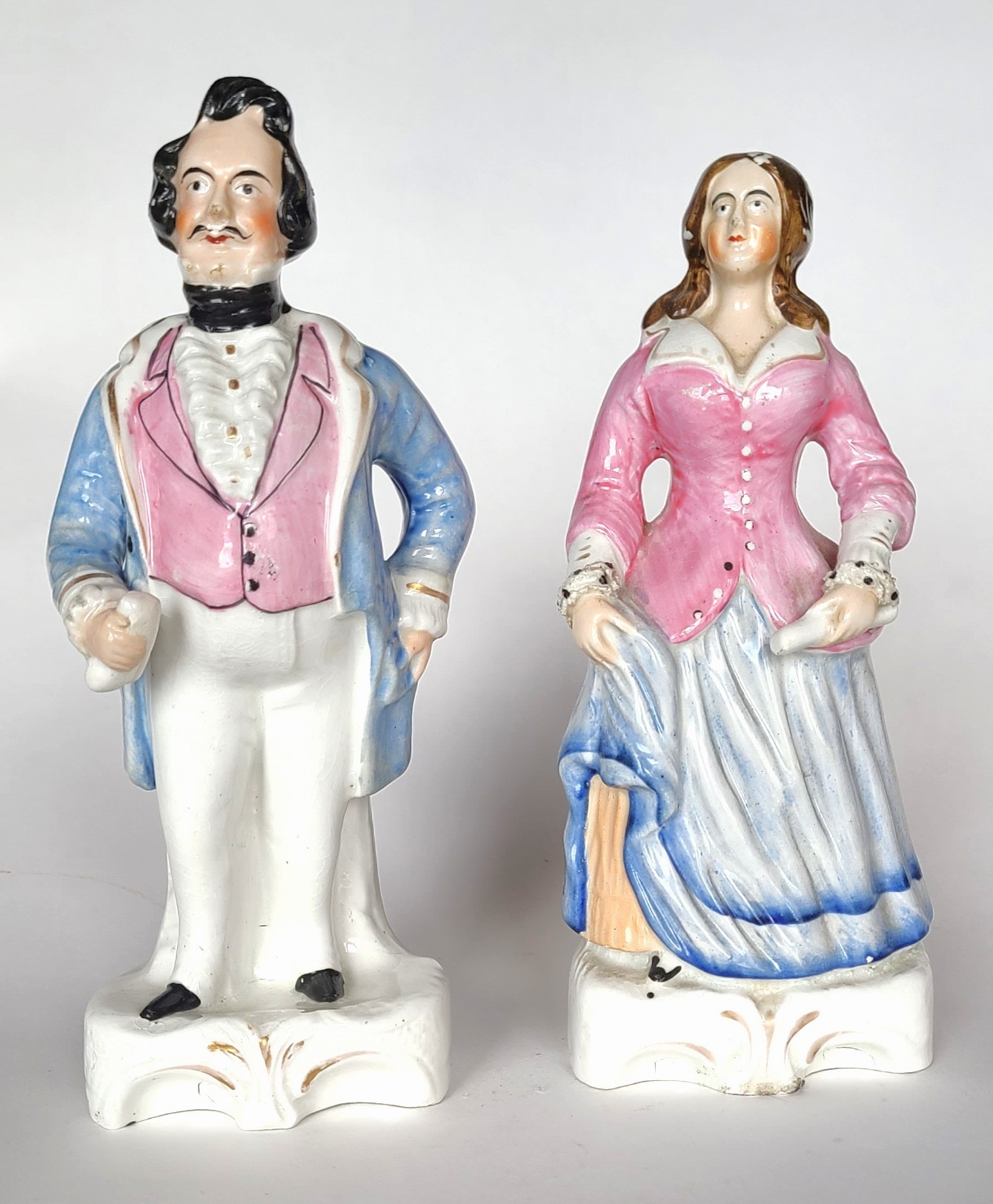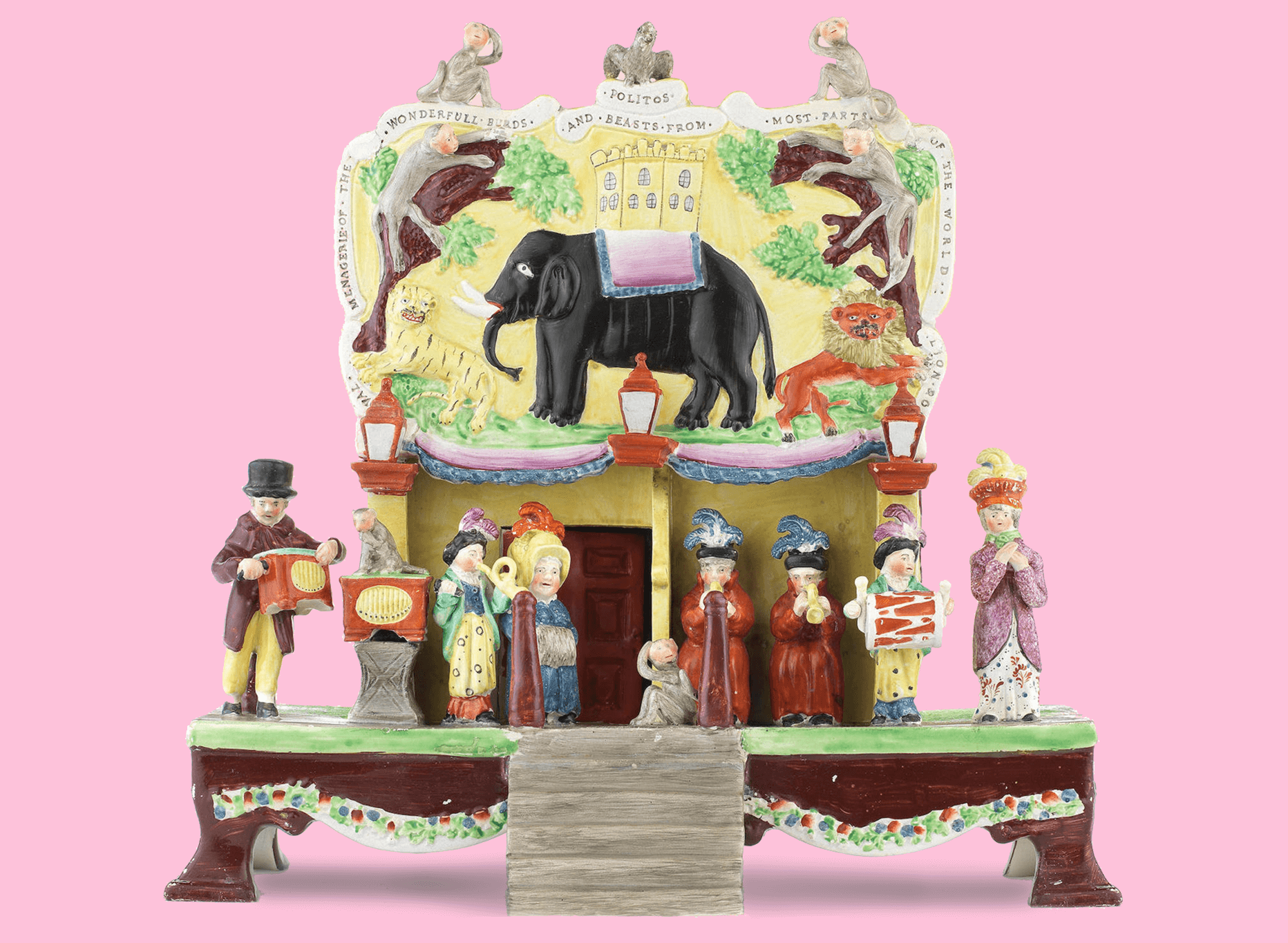Lady Godiva
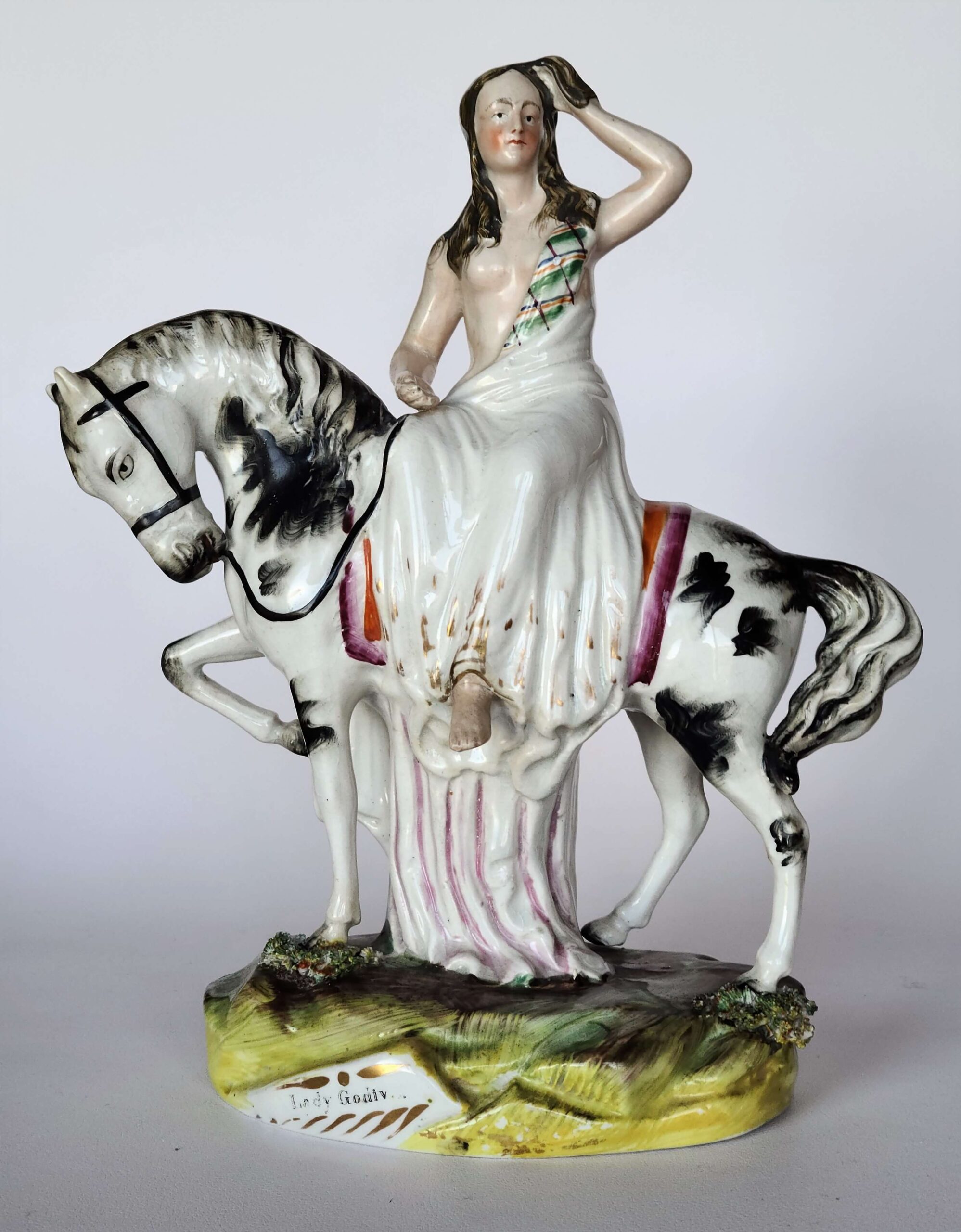
This is a rare figure portraying Lady Godiva seated sidesaddle on horseback. The figure is titled “Lady Godiva” and is decorated in the manner of the Parr factory, with soft yellow, green, and brown brushstrokes. Lady Godiva actually lived over 1000 years ago, but the English poet Tennyson published a poem about her in 1842, which may have been the inspiration for this figure. The figure is approximately 9 3/4” tall and dates to around 1840 – 1850. Harding Book Three illustrates this figure on page 91.

Who was Lady Godiva?
Lady Godiva is generally agreed to have been a real Anglo-Saxon woman who lived in Britain from c.990 – 1086. The popular Old English name Godgifu or Godgyfu means “gift of God”; ‘Godiva’ is the Latinised form and there a number of candidates for our Lady Godiva, but the most likely is Godgifu, wife of Leofric, Earl of Mercia, an area in Britain now known as the Midlands. They had nine children and were known as generous patrons to the churches in the area, founding a Benedectine monastery in Coventry and making endowments to a minster in Stow St Mary. She and her husband are commemorated as benefactors of other monasteries at Leominster, Chester, Much Wenlock, and Evesham. Godiva also gave generous gifts of gold and silver objects to many places of worship, including St Paul’s Cathedral in London. Although her husband Leofric died in 1057, we know Godiva was alive in 1066 as she is mentioned in the Domesday survey as one of the few Anglo-Saxons and the only woman to remain a major landholder shortly after the conquest. By the time of the great survey in 1086, Godiva had died and her former lands are listed as held by others.
The Legend of Lady Godiva
The legend of Lady Godiva was first recorded in the 13th century by monk called Roger of Wendover, known at the time as a gullible collector of anecdotes and a fanciful writer. It is not regarded as plausible by modern historians, nor is it mentioned in the two centuries after Godiva’s death, whereas her generous donations to the church receive various mentions. In the legend, Lady Godiva took pity on the poor people of Coventry, who were struggling under the high taxes imposed by her husband. Lady Godiva appealed again and again to her husband, who refused to lower the taxes. At last he said he would grant her request if she would ride naked on a horse through the streets of the town. Lady Godiva took him at his word, and after issuing a proclamation that all persons should stay indoors and shut their windows, she rode through the town, clothed only in her long hair. Just one person in the town, a tailor ever afterwards known as ‘Peeping Tom’, disobeyed her proclamation.
In art and literature
Whilst the legend was known of for many centuries, in the 19th century it really captured the imagination of artists and writers. Alfred, Lord Tennyson wrote one of his most famous poems, Godiva (1842) whilst he was Poet Laureate under Queen Victoria’s reign, perhaps dignifying the subject. Many paintings, sculptures and public statues were made, Minton Pottery commissioned P Pargetter to model a figure of Lady Godiva in 1867 and the Pre-Raphaelite artist John Collier painted the subject in 1898. You can see a selection of artworks depicting Godiva on the ArtUK website.


